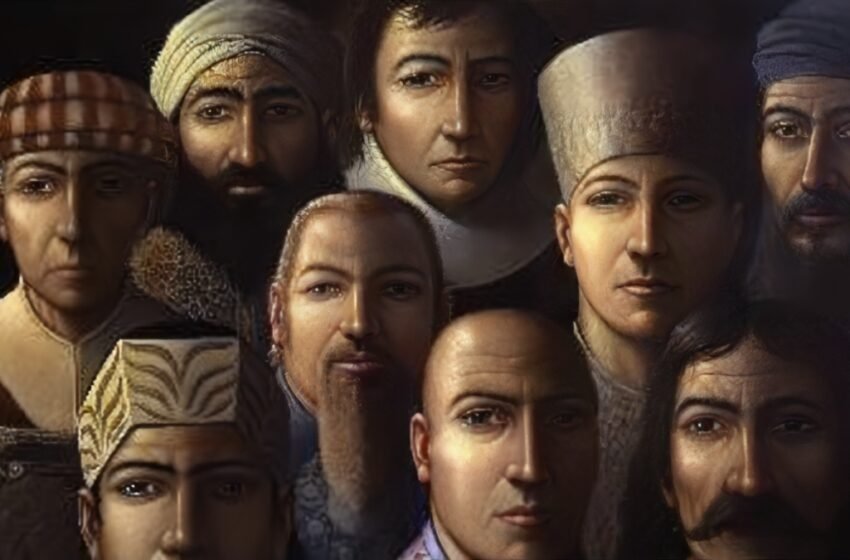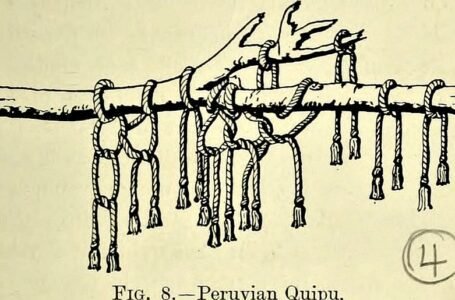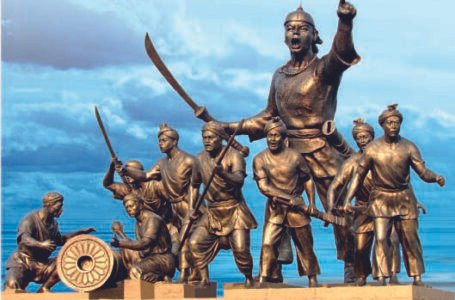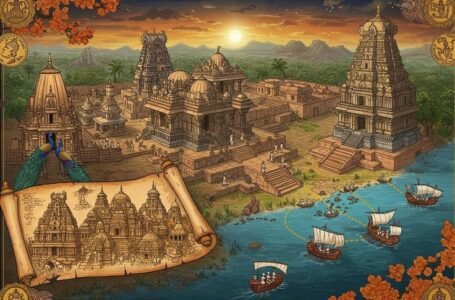The Nine Unknown Men: Protectors of Banned Wisdom or The Greatest Myth of India?

-Hemangi maheshwari
In the continuous flow of Indian history, where legends blend with fact, one particular tale stands out and refuses to be set aside. The narrative of the Nine Unknown Men has no chronicles inscribed into stone relics or concealed in ancient libraries, yet it thrives to this day. In this story, one finds it in the soothing murmurs about the mystical East, the pages of speculative fictions, and the deliberations of clandestine groups. While some people defend it as truth, others rightfully dismiss it as mere mythology. Regardless of the conversations, one thing stands clear: It is eternal.
Let’s turn back the clock to 273 BCE.
Most people know in Indian history Emperor Ashoka, the third ruler of the Mauryan Dynasty. He is remembered as the ‘transforming king’ post the Kalinga War. The Kalinga war caused bloodshed on an enormous scale, about 1 lakh people perishing, which alongside deeply transformed him. Afterward, he stopped pursuing violent expansion, embraced Buddhism, and adopted policies based on kindness after religious moderation. Instead of purely conquesting other nations, building them into an empire, he governed using these softer, kinder principles.
There is however, a more obscure piece of his history regarding the formation of a secret council known as the Nine Unknown Men.
As the story goes, the Kalinga War led Ashoka to evolve into a pacifist. He also realized some forms of knowledge could prove dangerous if left unchecked. He thought wisdom came in many forms and some could be incredibly harmful. Rather than obliterating these uncomfortable truths, he chose to bury them. He placed them with nine brilliant individuals. Knowledge was divided among them, and each was tasked with a specific domain of advanced science. All were bound to secrecy regarding their body of work.
This gave life to the legend of Nine Unknown Men.
These guardians, provided to them commensurately with the intellect of the guardians principle achieved advances that had the potential to alter civilization positively or negatively, never pu. Books were provided to these men each containing secrets which could have the entire sequence of civilization data. They said the shares remain advanced while some have drifted.
1. Psychology and Propaganda : Allow usage of mass manipulation, easily transmitted globally. First examples or drafts of advertisement and political journalism.
2. Physiology : Abilities to kill or cure with single touches. Secrets around methods and tactics on the body mastered by few.
3. Microbiology and Biochemistry: Development prescribed of infectious disease and shamelessly, those ideas were part of.
4. Alchemy and Transmutation : The concept of converting base metals into gold and, on a deeper level, elevating human awareness.
5. Communication: Most likely telepathy or sophisticated language symbols.
6. Gravity and Anti-Gravity: Techniques of altering weight and propulsion—now known as aeronautics.
7. Cosmology: Knowledge of space, celestial mechanics, and likely time travel.
8. Light: Advanced fields of optics could include invisibility, or light energy weapons.
9. Sociology: A manuscript on the processes of societal evolution or engineering societal collapse.
Does it sound unbelievable? It does, but think about this: the Vedas and Samhitas, as some examples, show a broad range of knowledge pertaining to mathematics, medicine, astronomy, and even physics. There is an argument, for example, that Indian scholars discussed surgical procedures, the atom, light speed, and planetary movements long before these concepts gained acceptance in Europe. If that is what is publicly recorded, what other things have the potential to be uncovered?
Jacolliot, a French author who also worked in colonial India, was one of the first to talk about the Nine Unknown Men in modern context. He treated them respectfully and adorned them with enigmatic titles. Talbot Mundy later picked the story up in the 1920s and made it into a novel, The Nine Unknown, where he fused make-believe and history. He characterized the Nine as a brotherhood whose legacy was secretly passed on and influenced modern science, global politics, and international relations from behind the curtains.
Doubters ridicule, saying there is no archeological evidence. No documents or inscriptions. Though absence of proof fuels the legend. Would a secret society operating for thousands of years really leave evidence behind?
Perhaps most interesting about the legend is how it aligns with the greatest fears of each period. To illustrate, a hidden, concealed and supreme intelligence served as a cultural resistance to British colonial rule. In contemporary times, the Nine have been associated with India’s advancements in space and nuclear technologies. Some conspiracy theorists argue that ancient Indian engineering and architecture, such as the precision of the Iron Pillar of Delhi or the Kailasa Temple, suggest the Nine covertly influenced world history through their knowledge.
Or rather, the question may be less focused on whether or not the Nine existed, and shifted to their greater meaning.
It invites reflection regarding the balance between power and restraint. In today’s world where most information is precious, guarded, or weaponized, the Nine Unknown Men remind us that wisdom, actually, is knowing when to conceal as much as it is knowing where to boldly seek.
Should every piece of information be available to everyone? What if some facts, if exposed, can spiral out of control?
These questions are pertinent today. We exist in a world where AI can mimic human voices, where gene editing is possible, and where a single engineered virus can disrupt nations. We have become the very society Ashoka may have feared.
Perhaps that’s why the legend still resonates. The Nine, whether real or not, reflect a question back at us: Can we handle everything we know?
From a storytelling perspective, the saga of the Nine Unknown Men touches on a deeper aspect of the Indian mindset, a cultural respect for knowledge accompanied by a warning against arrogance. The Upanishads suggest that true wisdom requires detachment. The Mahabharata cautions about weapons capable of global destruction. Even the idea of Brahmavidya, or divine knowledge, is carefully guarded, given only to those deemed spiritually ready.
This notion, that knowledge is sacred and should be earned rather than taken, seems almost foreign in today’s interconnected world. Yet, it may be the lesson we need most.
So, where does that leave us?
Perhaps the Nine Unknown Men never lived on earth. Perhaps they weren’t nine, or even men. They may be an allegory, India’s way of preserving the idea of responsible knowledge. Or perhaps, they linger in the shadows, observing. Not intending to control, but to protect. Not seeking to interfere, but to act when we go too far.
And if that moment arrives, let’s hope we remember how to listen to the silence.


